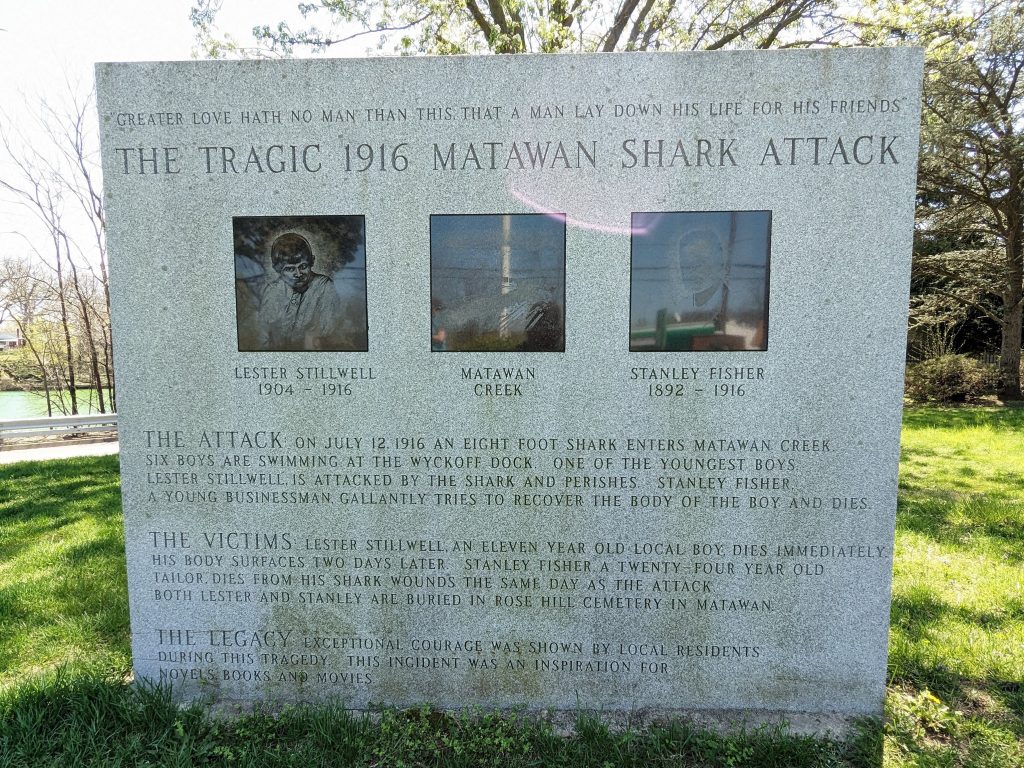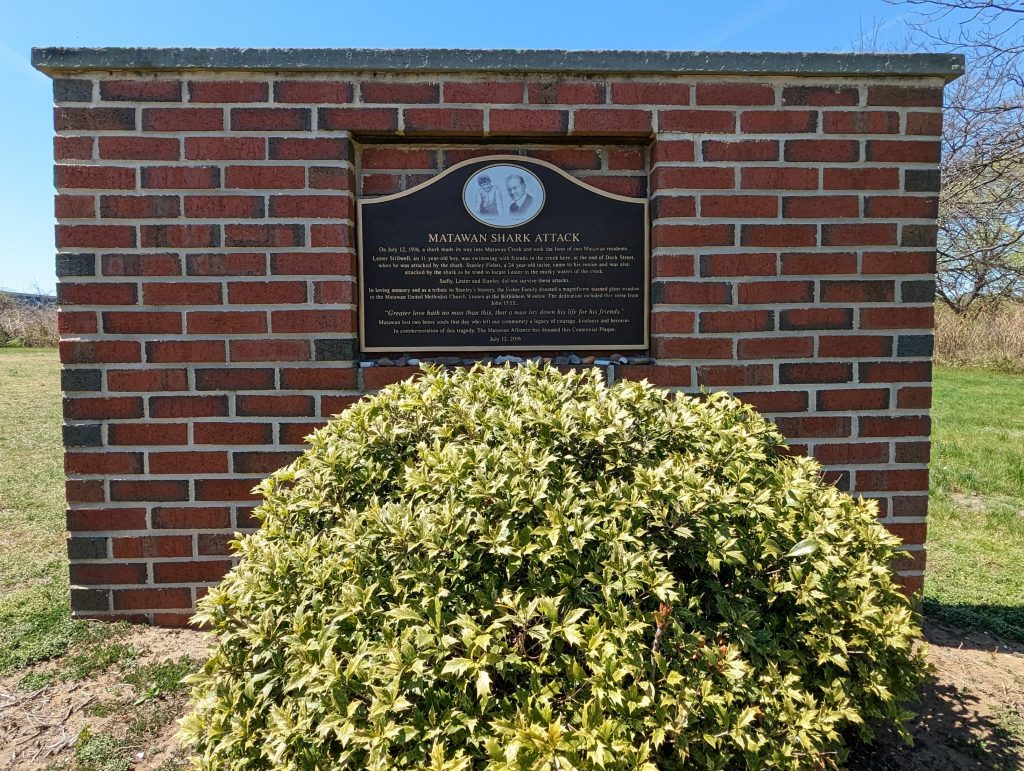In July 1916, media across the U.S. buzzed with reports of five shark attacks in three locations in central and southern New Jersey. The first two attacks were on the Jersey shore, with a fatality reported in the resort town of Beach Haven (north of Atlantic City) on July 1 and another in Spring Lake (south of Asbury Park) on July 6. Subsequent shark sightings along the coast were dismissed, and a heat wave and polio epidemic kept beaches full of happy vacationers.
Six days later, however, a group of friends were playing in Matawan Creek, about 1.5 miles inland from the Atlantic Ocean, when they spotted a dorsal fin above the water. Before they could react, 11-year-old Lester Stilwell was pulled under. A 24-year-old businessman from town, Watson Stanley Fisher, dove into the creek and recovered the boy’s body, but before Fisher could fully return to shore he was attacked by the shark and lost the boy’s body. Fisher passed away at the hospital. Stilwell’s body was recovered two days later.
30 minutes later, just half a mile away from the site where Fisher and Stilwell were attacked, a 14-year-old boy from New York City, Joseph Dunn, was bitten on his leg. Dunn’s friends tussled with the shark and were able to free him, and the teen survived after a two-month stay in a local hospital.
After the attacks, visits to Jersey beaches declined by as much as 75%, while sightings of sharks increased significantly. Bounties were offered for the capture of sharks all along the Jersey shoreline, and President Woodrow Wilson even discussed the situation with his cabinet. Eventually, hundreds of sharks were eradicated. One shark hunter even described the contents of the stomach of his catch, made just a few miles from Matawan Creek, as “suspicious fleshy material and bones.” No shark was ever captured or even sighted in Matawan Creek despite a $100 reward offered by Matawan’s mayor.
While many reports of the day suggested that the attacks were from a great white shark, many biologists now believe that it was more likely a bull shark, the only shark that lives in both fresh and salt water. Bull sharks are also known to have attacked humans, while great white sharks are not typically found in tidal inlets such as Matawan Creek.
In Matawan, NJ, there are several sites marking the attacks and memorializing the victims. Of course, we had to visit while passing through. A railroad bridge over the creek has been decorated by an anonymous artist with an image of a shark on the attack.
Two modern day memorials have been erected in Matawan, one in the town’s Memorial Park on Main Street, and another to commemorate the 100th anniversary of the attacks on Sunnybrook Place.


Fisher’s family used his life insurance proceeds to purchase a stained glass window for local Methodist Church. The window was dedicated in July 1918; the church building was demolished in the 1970s and the window auctioned, its whereabouts now unknown.
Many accounts of the 1916 shark attacks have suggested that these were inspiration for the movie Jaws and other works, but Jaws author Peter Benchley explicitly denied this to the New York Times in 2001.




